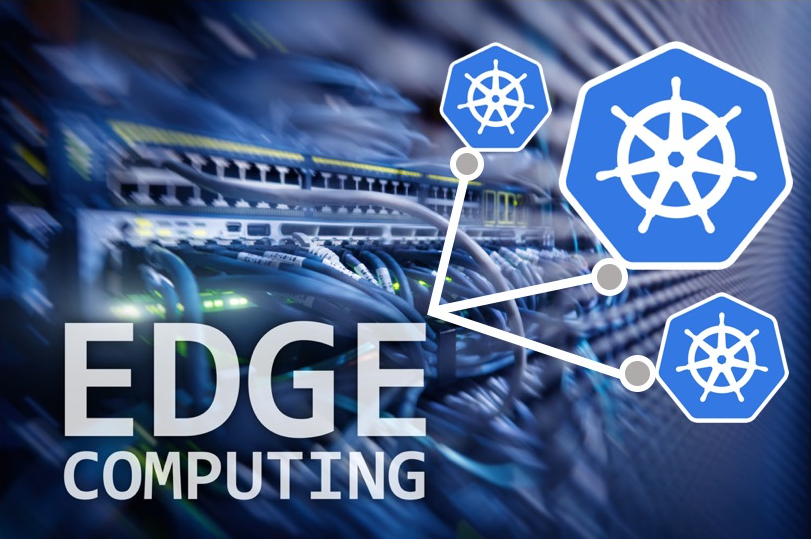With 5G adoption set to surge over the next several years, now is the time for companies to begin planning ways to take advantage of 5G networking within Kubernetes-based architectures.
To provide guidance on the complicated topic of telco 5G environment implementation within Kubernetes, Platform9 recently offered a webinar titled “Networking and Kubernetes in the World of 5G Edge.” The webinar is part of a series titled “Enterprise Action Plan – Moving to Production with Kubernetes,” which offers Kubernetes implementation tips from Platform9 experts and partners.
The 5G event included insights from two experienced Kubernetes engineers: Peter Fray, Chief Technologist at Platform9; and Roopak Parikh, Head of Engineering and a Platform9 co-founder. Here’s a recap of the event’s main topics, which ranged from the current state of 5G, to managing and optimizing 5G networking within a Kubernetes architecture.
Watch on-demand:
Networking and Kubernetes in the World of 5G Edge
Understanding the K8s Journey
Fray opened the discussion with an overview of the Kubernetes journey. As he explained, many enterprises today are interested in implementing Kubernetes, but they must complete a number of steps to do so.
The early steps on the Kubernetes journey involve determining how to deploy clusters, and which CNI to use to manage networking. Companies then typically deploy a basic stateless app, then configure persistent storage so that they can begin running more complex applications.
After that, they need to manage logging and monitoring for their clusters. They also typically want to set up a CI/CD pipeline that integrates with Kubernetes so that they can perform iterative deployments. They need to manage security and access control, too.
Finally, with these items sorted out, organizations can move onto “day 2” operations in Kubernetes, which include processes like handling upgrades and outages.
The 5G networking webinar addressed a topic that starts to matter to enterprises around the midpoint of their Kubernetes journey. Companies may not need a 5G-compliant networking configuration just to deploy a Hello World app to Kubernetes; a basic CNI setup will suffice for that. But by the time they get to production deployments, they’ll need a more sophisticated networking configuration if they want to take advantage of 5G networking.
The State of 5G
After explaining where 5G networking fits within the Kubernetes journey, the panelists moved onto an overview of the state of 5G today.
Parikh explained that, in one sense, 5G is simply the latest evolution in a series of changes that involved moving networking technology from wired to wireless, then from 2G to 3G and 4G. With each update came higher bandwidth capacities.
But, he added, increasing bandwidth is not the only reason why enterprises are turning to 5G. It’s part of a broader strategy that aims to add flexibility to networking architectures. For many providers, that strategy began around 2015 with the shift to virtual network functions, or VNFs. By virtualizing some networking components, providers reduced the need to manage physical devices within their infrastructure. Deployments and upgrades became easier when everything was defined in software rather than being baked into physical hardware.
Now, Parikh said, “there’s another wave coming,” and it’s driven by containers. “Instead of using virtual machines as the building block for 5G networks, providers are moving into containers. They want to divide up their applications into smaller pieces.”
With containers, he said, companies gain not only better performance (virtual machines can waste up to 20 percent of system resources on overhead, he pointed out) but also deployment flexibility. When an application is containerized, it can be deployed at an edge location that is connected by 5G using the same tools and processes that power container deployment in the public cloud.
And that’s where Kubernetes fits into the 5G picture: By providing an orchestration solution that can work with 5G edge architectures just as seamlessly as it does in the cloud (or on-premises, for that matter), Kubernetes is becoming a critical component of architectures that take advantage of 5G.
5G Edge Use Cases
To illustrate what 5G edge architectures look like in practice today, Parikh and Fray discussed some examples of how Platform9 customers are using or plan to use 5G for edge deployments.
One key example is connected cars. 5G use in cars will increase from 15 percent in 2020 to 74 percent in 2023, Fray said. For cars, not only does 5G networking increase bandwidth, but it also — and this is most critical from a safety perspective — reduces latency. For example, Fray said, a car that skids on the ice can use a 5G network connection to notify other cars in the immediate vicinity within milliseconds, in order to help them avoid the hazard.
Factory automation is another important use case for 5G edge networking, Parikh said. 5G networks can fulfill needs like maneuvering automated vehicles within a factory environment.
A third example of 5G in use today is video surveillance systems, which require both generous bandwidth and low latency. With 5G, companies can replace wired video networks with wireless ones without compromising on performance.
5G Architectural Design
Next, Parikh and Fray went into some detail about what a 5G edge network architecture looks like. The key takeaway was that 5G networks are highly distributed and involve multiple components; at the lowest level are devices, which interface with the access edge. In turn, the access edge interfaces with the aggregate edge. Multiple aggregate edges may interface with a single data center.
The scale of 5G architectures is also massive. As an example, Parikh pointed to cell phone towers, which serve as access edge infrastructure where Kubernetes clusters may be deployed. A single network could include tens of thousands of towers.
Likewise, Fray said, Platform9 has customers who operate hundreds of retail stores and use 5G networking and Kubernetes to manage video camera networks within them; another example of the massive scale of 5G networks.
Managing 5G Networks in Kubernetes
Because of the complexity and scale of 5G networks, the panelists said, using 5G as part of a Kubernetes-driven strategy can be particularly challenging. Teams have to use multiple network interfaces at once, which can be done using the Multus CNI.
They may also have to contend with challenges like IPv6 compatibility, which is a must-have for large-scale networks where the IPv4 address range is too small. This requires configuring Kubernetes services, pods and containers for IPv6, which is no trivial task.
The key to simplifying these challenges, the panelists said, is to leverage Kubernetes management solutions like Platform9, which provides out-of-the-box support for technologies like Multus. Just as important, Platform9 can automatically discover the underlying hardware within a Kubernetes cluster and configure it as needed to work with Multus — which would be a huge task to accomplish in a large-scale environment if you had to configure each node manually.
They added that, because Platform9 offers full support for all of the common Kubernetes deployment patterns — private data centers, public cloud or edge architectures — it makes it easy to leverage 5G network performance regardless of how your architecture is configured.
Q&A
Fray and Parikh responded to some audience questions over the course of the webinar, and answered others in a Q&A session at the end.
One attendee asked whether it’s possible to take advantage of 5G networking using a hybrid cloud architecture instead of an edge architecture. Parikh responded that it certainly is, and in fact not much would change from a management perspective if you use Kubernetes to orchestrate your applications. One important difference, however, is that interconnect solutions, like AWS Direct Connect, would be more important for optimizing networking performance in this type of configuration.
Another audience member asked whether latency between nodes becomes a problem with an edge architecture if some nodes are hosted in a data center and others are on the edge. Parikh said that, in general, this is not an issue, because the nodes will still be able to communicate in a matter of milliseconds on a 5G network. But Fray and Parikh agreed that node distribution is an important factor to bear in mind when designing edge architectures, in order to avoid potential performance issues that may occur if nodes are too far apart from each other.
A related question centered on whether it’s possible to manage multiple master nodes if they are spread across different locations. The panelists agreed that it is, especially with the help of a management solution like Platform9 that makes it possible to manage multiple master nodes and clusters from a central location — meaning that no matter how widely distributed your master nodes are, you can manage them without a hassle.
Conclusion
In short, any organization that requires a large-scale, distributed deployment, or that simply needs the bandwidth and latency enhancements that come with 5G, is likely to find value in Kubernetes. But to tame the complexity that comes with complicated deployments like these, centralized management solutions like Platform9 are crucial.
The full webinar is available for free here. In addition, if you’d like to attend future webinars in this series live, you may sign up here.
Watch on-demand:
Networking and Kubernetes in the World of 5G Edge



